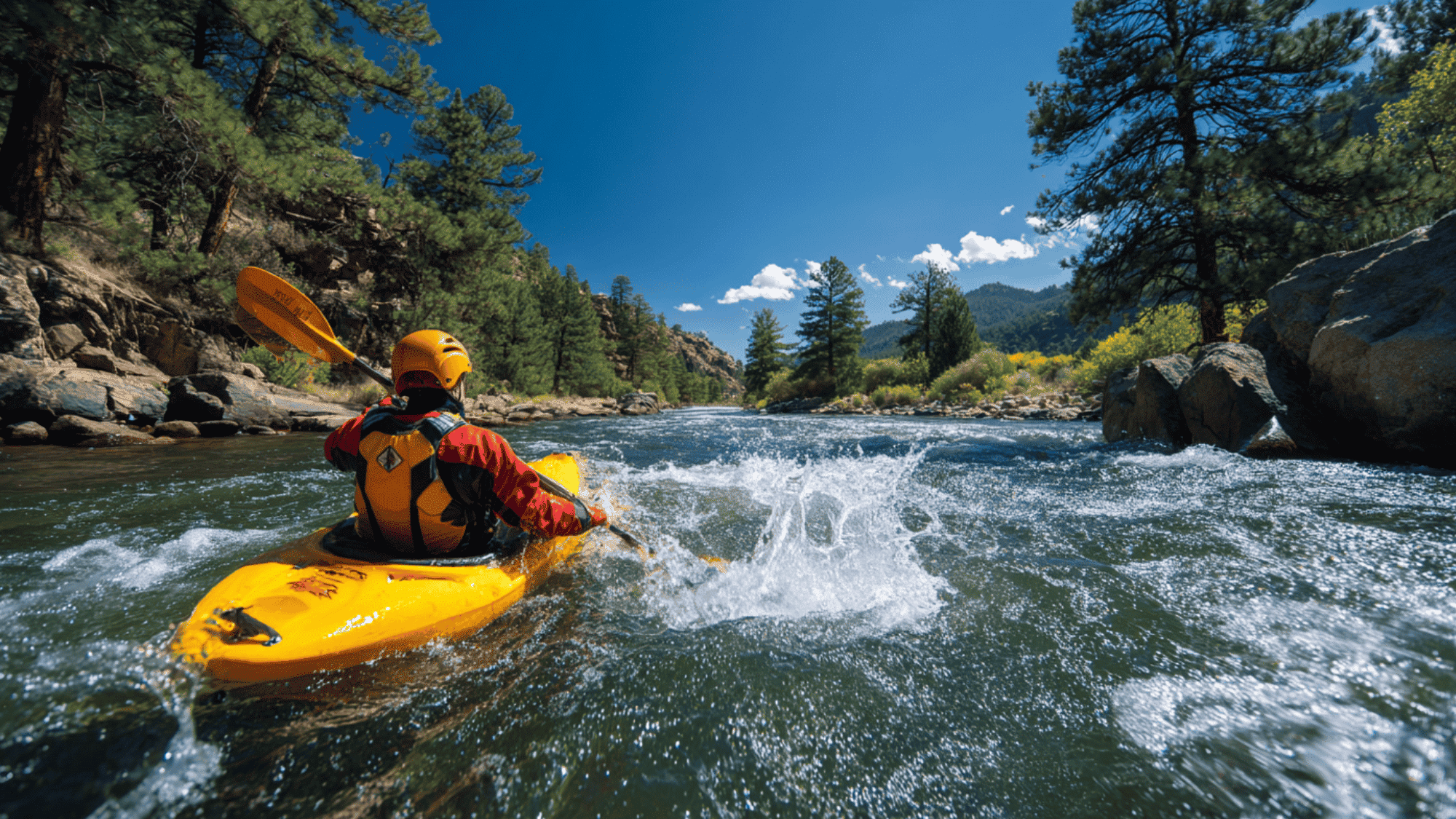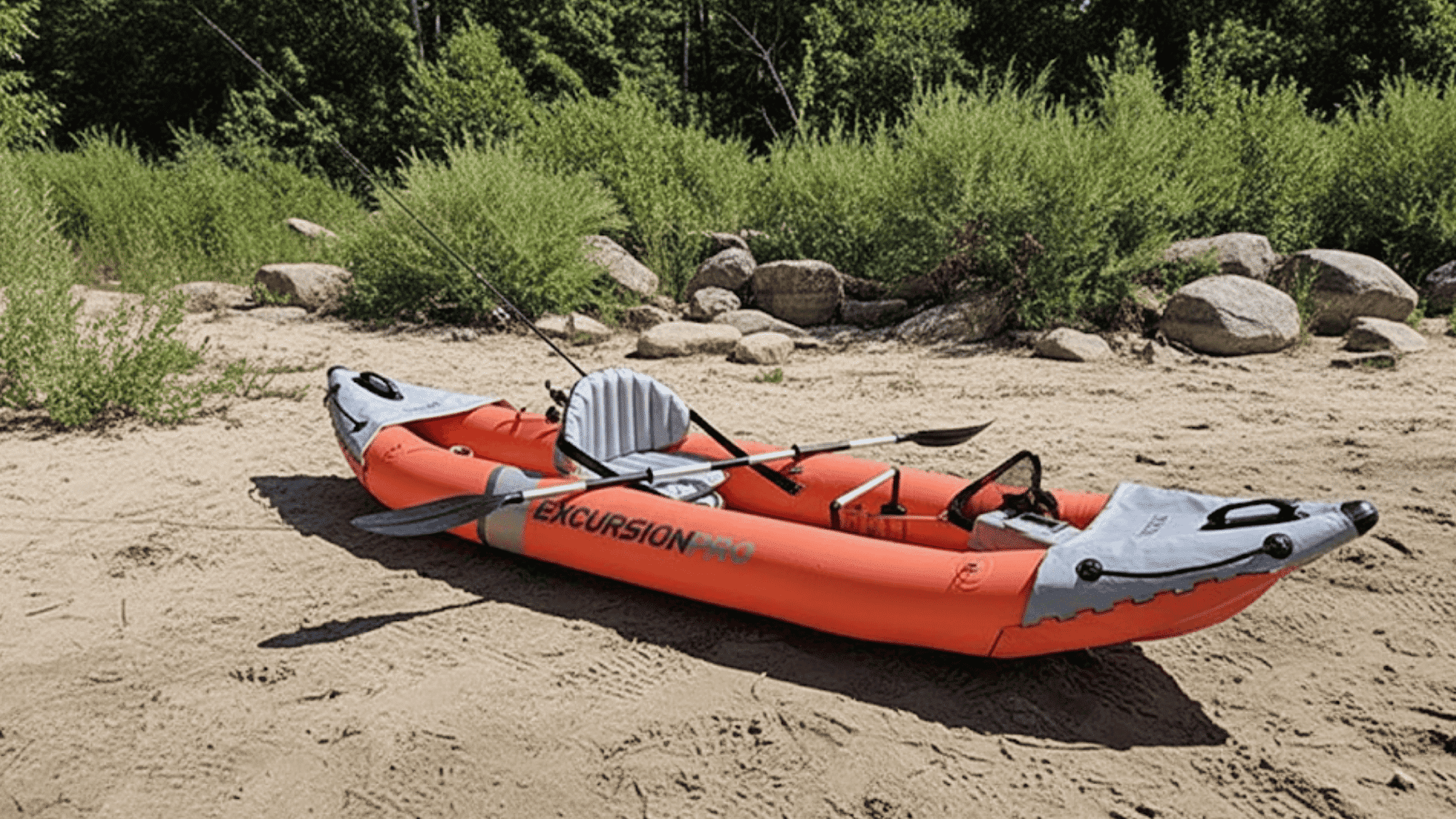If you’ve ever packed your kayak with snacks, fishing gear, and maybe even your pup, you’ve probably asked yourself: Am I pushing this thing too far?
That’s exactly why knowing your kayak’s weight limit matters.
It’s not just about the big number on the specs; it’s about how much your kayak can safely carry while gliding smoothly, staying stable, and being fun to paddle.
One common mistake new paddlers make is confusing the kayak’s actual weight (how heavy the boat itself is) with its weight capacity.
These are very different, and understanding the difference can save you from frustration or even a dangerous situation out on the water.
What Is a Kayak Weight Limit?
The kayak weight limit is the maximum load a kayak can handle without sinking. That number includes you, your gear, your cooler, fishing rods, and anything else you bring on board.
Here’s the catch: just because a kayak lists 350 lbs as its maximum doesn’t mean you should load it with 350 lbs.
Once you get near that number, stability drops, the boat rides lower in the water, and paddling feels heavy.
Also, don’t confuse kayak weight (how much the kayak itself weighs) with the load it can carry.
The kayak’s own weight doesn’t count against its listed capacity, but it does matter when you’re hauling it to the water.
Maximum Capacity vs. Performance Capacity
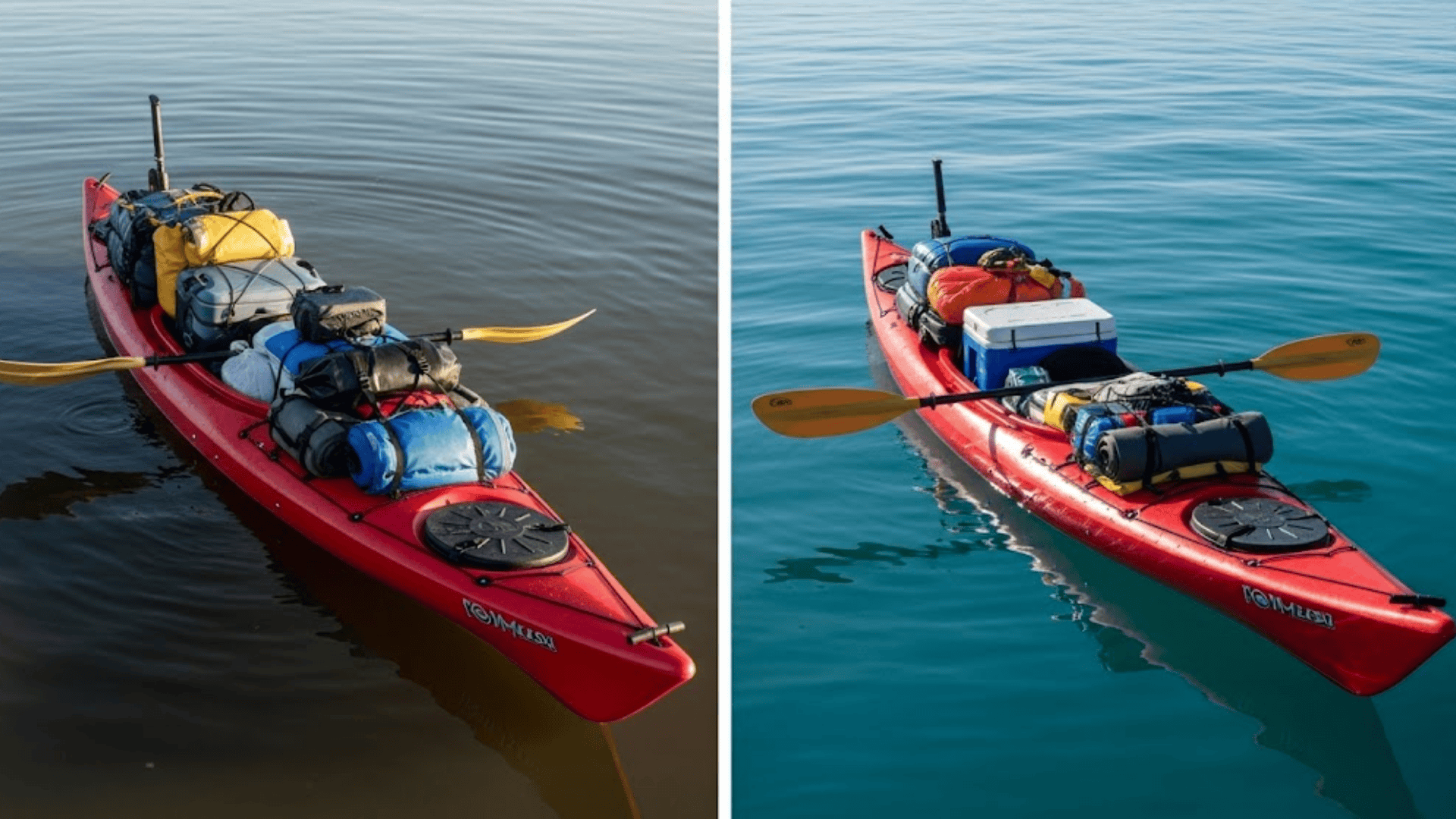
When checking a kayak’s weight limit, remember there are actually two numbers to consider: one shows the absolute maximum, the other reflects real-world performance.
- Maximum capacity: The absolute top number a kayak can hold before it sinks. Think of this as the “technical” limit.
- Performance capacity: The practical limit where your kayak still feels stable, easy to paddle, and safe in real conditions.
Most paddlers follow the 70% rule, staying at about 65–70% of the maximum rating. For example, if a kayak lists 400 lbs, you’ll want to keep your total load under 260–280 lbs.
Why the Kayak Weight Limit Matters
Understanding your kayak’s weight limit ensures safe paddling with better balance, smoother rides, greater safety, plus more enjoyable outdoor adventures.
| Factor | What Happens When You Overload a Kayak |
|---|---|
| Stability | Kayak wobbles more and tips easily |
| Maneuverability | Paddling feels heavier and slower |
| Safety | Higher risk of capsizing or taking on water |
| Durability | Extra stress weakens the hull faster |
Respect your weight limit for the kayak every trip for improved stability, safer journeys, stronger performance, plus unforgettable experiences on the water.
How to Calculate the Right Limit for You
Staying within your kayak weight limit is easier than it sounds. Just follow three simple steps:
- Add your load: Combine your body weight with all gear, clothing, food, and extras.
- Check the rating: Compare that total to your kayak’s maximum capacity listed by the manufacturer.
- Use the safe zone: Keep your load within 65–70% of that max to maintain stability, comfort, and performance.
Example: If you weigh 200 lbs and carry 40 lbs of gear, your total is 240 lbs. To stay safe, your kayak should list a maximum of at least 350 lbs (240 ÷ 0.7).
This approach gives you breathing room, keeps the kayak steady, and makes every trip easier and more enjoyable.
Typical Kayak Weight Limits by Type
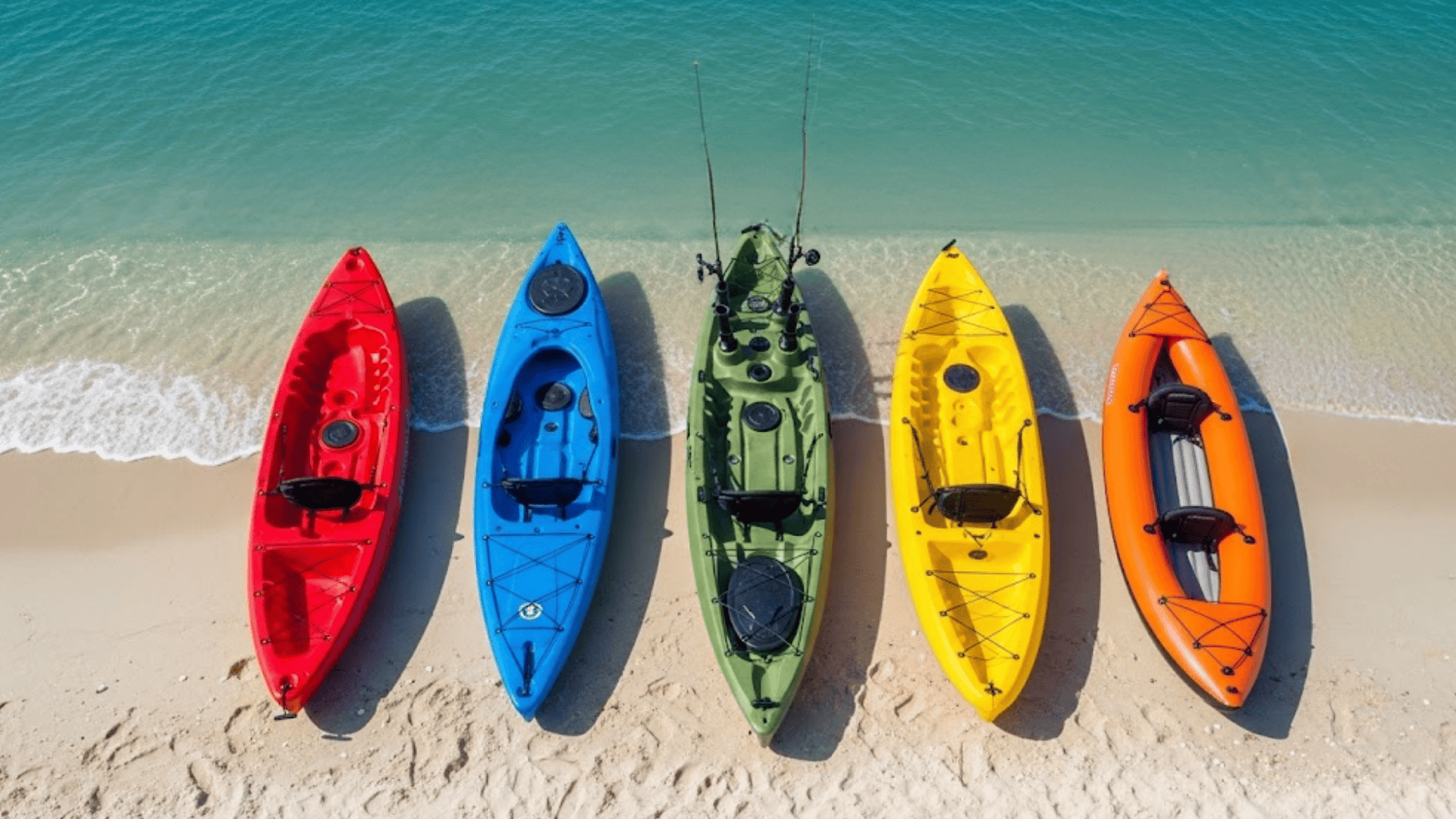
Knowing the average kayak weight limit by type can help you choose the right boat for your body size and gear.
| Kayak Type | Typical Weight Limit |
|---|---|
| Recreational | 250–350 lbs |
| Touring | 300–450 lbs |
| Fishing | 400–600 lbs |
| Sit-on-top | 350–550 lbs |
| Inflatable | 400–750 lbs |
Heavier-duty designs, such as fishing kayaks, are made for extra stability and gear, so they usually carry more.
Community Voices and Personal Experiences on Kayak Weight Limit
Real paddlers share how the kayak weight limit affects stability, comfort, and safety, and lessons learned from firsthand experiences and community stories.
Sometimes the best insights come from fellow paddlers who’ve tested the limits themselves. Here’s what kayakers are saying in popular forums:
1. Paddling.com – Weight limits on kayaks
A paddler who’d bulked up after muscle training asked if a 250 lb-rated kayak would sink at 270 lb. The response?
“Being over the specified weight won’t sink the kayak, but it will have it lower in the water which will change how it performs and may even make it less stable.”
View the forum discussionPaddlingSpace.com
2. World Sea Fishing Forum – User’s careful breakdown
One angler detailed how close their setup came to the limit:
“My kayak (Viking ProFish 400) capacity is 175 kg. I’m probably 100 kg in wet clothes… total load remains about 50 kg below the limit.”
View the forum discussionworldseafishing.com+1
3. Reddit – r/Kayaking
One newbie posted:
“I’m 5’9 and 280 lbs, so I’ll need a larger weight capacity… I would like a 10 foot kayak… It’ll mostly get used for day trips…”
See the post on Reddit
4. Pensacola Fishing Forum – Manufacturer overstatements
An experienced angler called out “fudging”:
“Most manufacturers ‘fudge’ on a yak’s stated carrying capacity… I think the actual load it handles is less.”
View the forum discussionoutdoordice+10pensacolafishingforum.com+10Paddle Round The Pier+10
5. Carolina Hunting & Fishing Forum – Canoe/Kayak Weight Limits
A user shared concerns about managing heavy loads:
“For Kayaks… once you add gear, you can be looking at 350 # in the boat… Canoes… have upwards of 1200 # capacity… don’t ever get near weight capacity of a boat, especially kayaks/canoes as they become significantly more difficult to manage on the water.”
Read the thread on NCHuntandFish
Why These Voices Matter: Real paddlers show that gear, conditions, and optimistic ratings make staying under 70% of the kayak’s weight limit safest.
Tips for Staying Within Safe Kayak Weight Limit
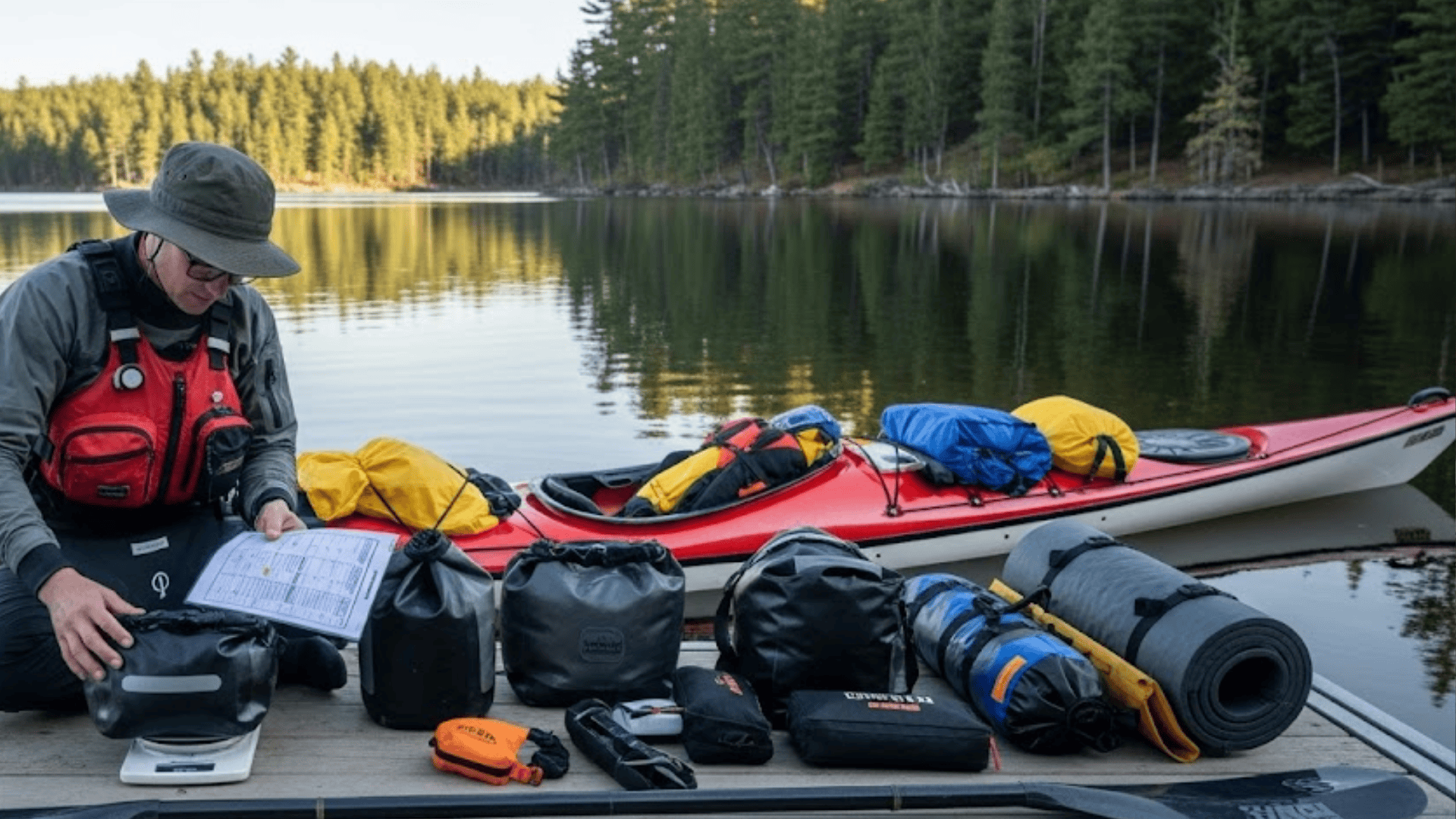
Staying within your kayak weight limit isn’t hard; it just takes a little planning and awareness before heading out.
- Weigh yourself, your gear, and note the kayak’s dry weight.
- Pick a kayak with enough performance capacity buffer.
- Keep your load under 70% of the maximum, especially in rough water.
- Pack smart, use storage efficiently, and balance weight front to back.
- Do short test runs with partial load before committing to longer trips.
By following these simple steps, you’ll protect your kayak, paddle with ease, and enjoy safer, smoother adventures every time.
Final Thoughts
Understanding your kayak’s weight limit is one of the simplest ways to stay safe and enjoy your time on the water.
Remember, the number printed on your kayak is only the maximum; it’s smarter to work within the performance capacity, usually 65–70% of that figure.
Doing so helps your kayak remain stable, easy to paddle, and durable for many seasons ahead.
Real paddlers know that once you push too close to the limit, comfort and safety quickly disappear.
Ready to plan your next outing? Calculate your load, choose the right weight limit for your kayak, and paddle with confidence today!
Frequently Asked Questions
What Does the Kayak’s Weight Limit Mean?
It’s the maximum load a kayak can hold, but safe paddling usually requires staying under 65–70% capacity.
Can I Exceed the Weight Limit for a Kayak?
Exceeding capacity risks instability, poor performance, and possible capsizing. Always respect limits for safety and smoother paddling.
Does Kayak Weight Include My Gear?
Yes, the kayak’s weight limit includes your body, gear, clothing, pets, and any extras loaded onboard.
How Do I Choose the Right Kayak Weight Capacity?
Select a kayak with a maximum capacity of at least 100 pounds more than your body weight plus expected gear.










